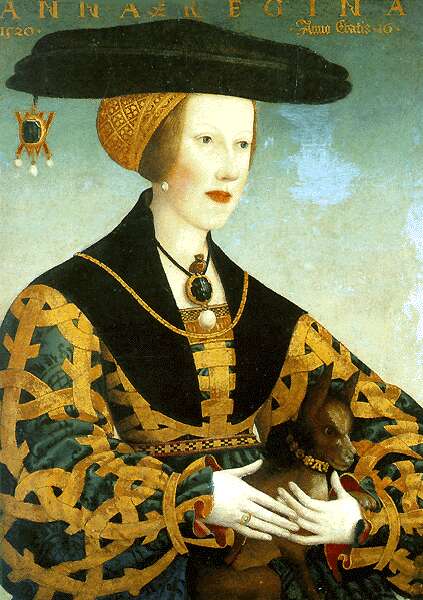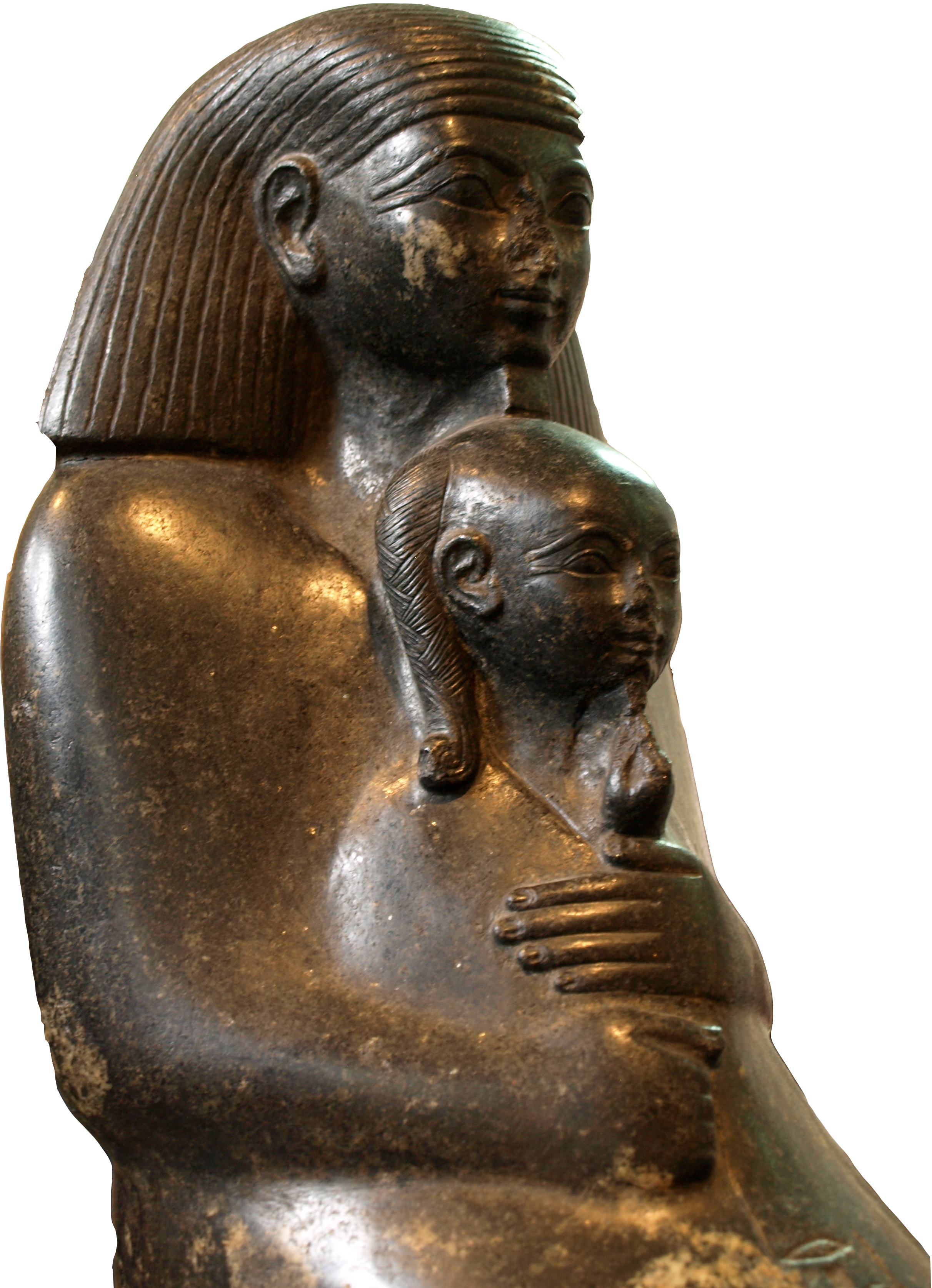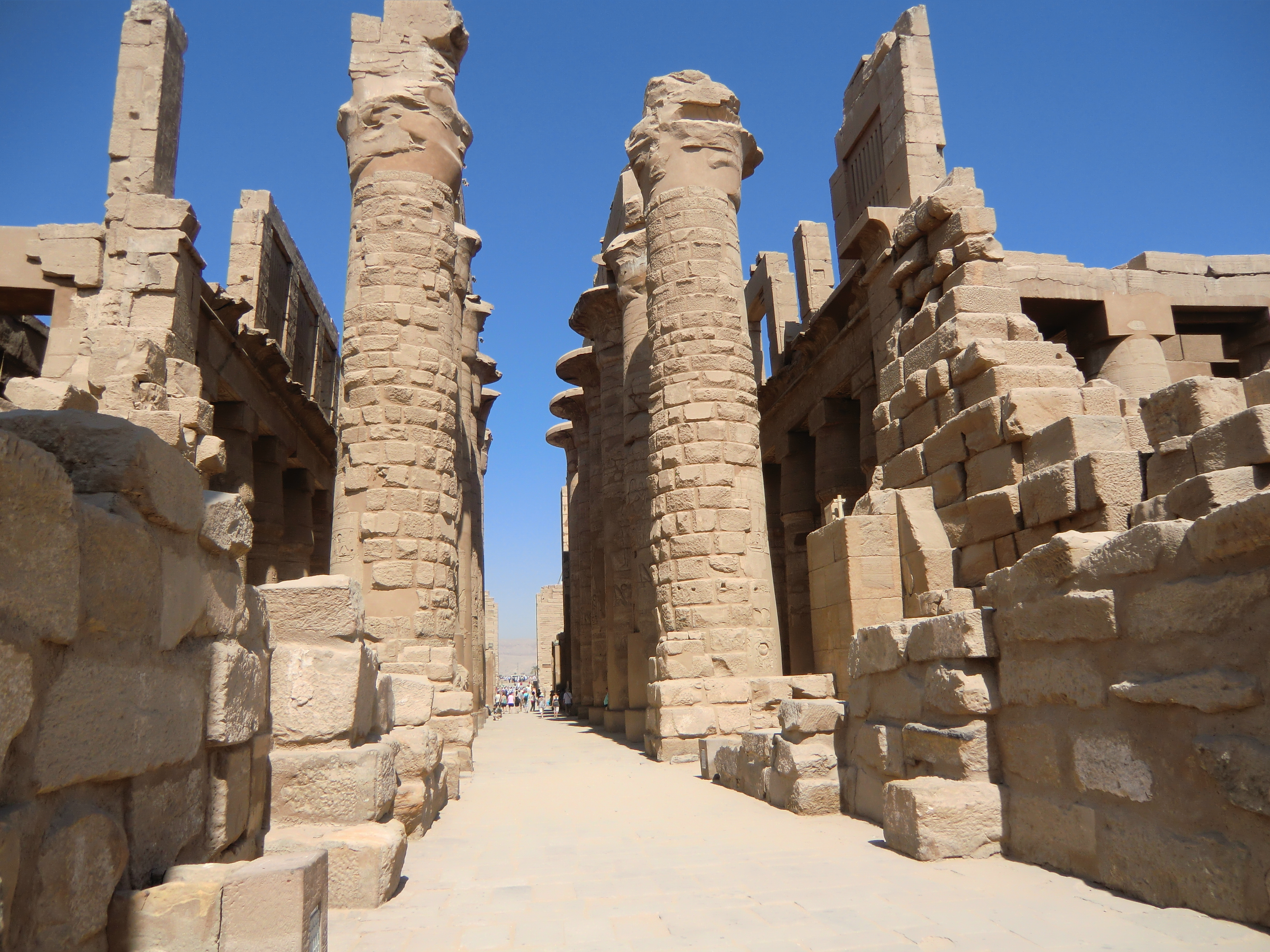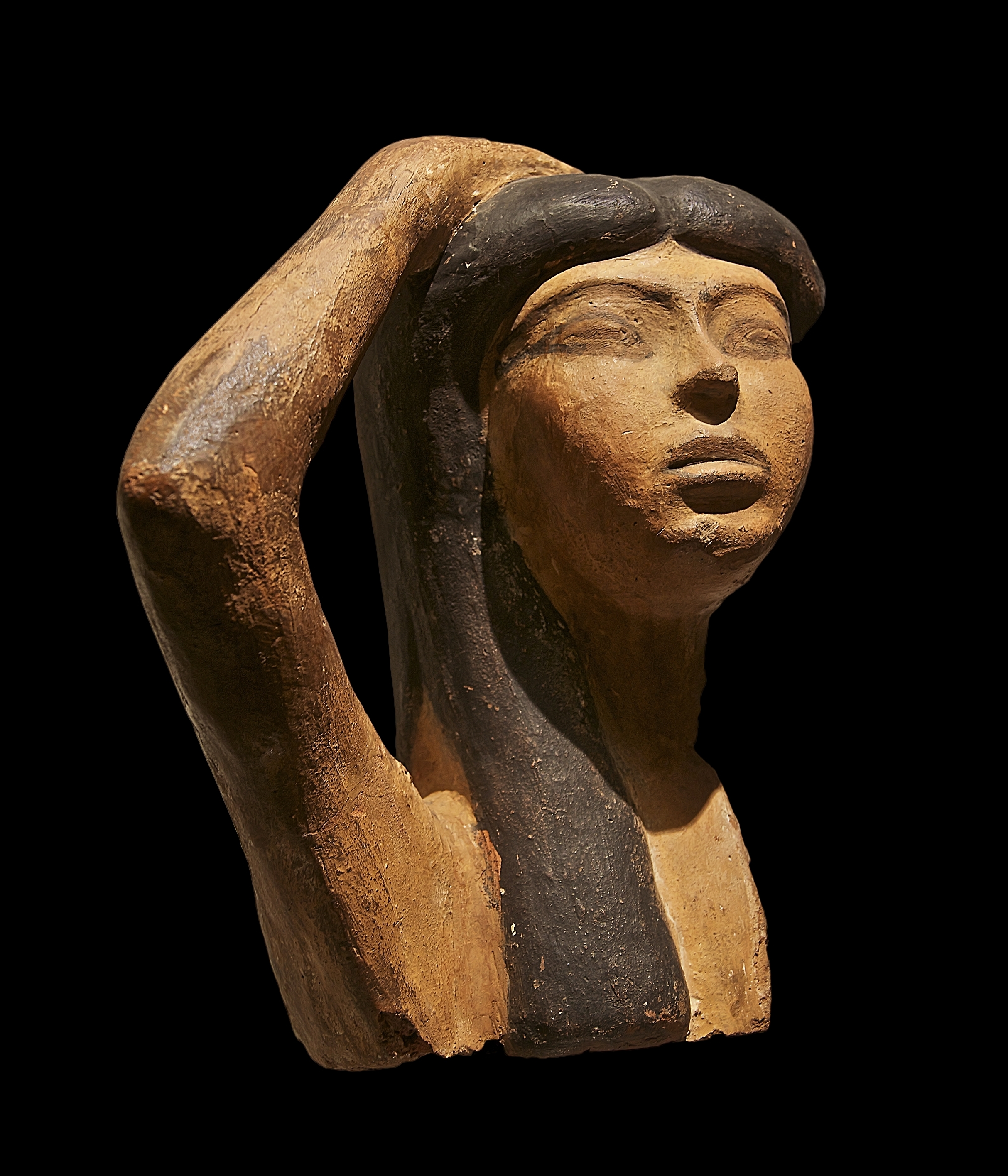|
Iset (queen)
Iset (or ''Isis)'' was a queen of the Eighteenth Dynasty of Egypt, and she was named after goddess Isis. She was a secondary wife or concubine of Thutmose II. Biography Iset was the mother of Thutmose III, the only son of Thutmose II. Her son died on 11 March 1425 BC and her name is mentioned on his mummy bandages and a statue found in Karnak.Dodson & Hilton, p.131 Although in these later instances Iset is referred to as Great Royal Wife, during the reign of Thutmose II the great royal wife was Hatshepsut. Thutmose II died in 1479 BC and, after his death, Hatshepsut became regent for the young king Thutmose III. Thutmose III became the head of the armies of Egypt as he grew up. Hatshepsut ruled as pharaoh until her death in 1458 BC when her co-regent, Thutmose III, became pharaoh. At that time Iset received the title of ''"King's Mother"'' (since her son had become pharaoh) and she may then have been designated as a royal wife if she had not been previously when he was the co- ... [...More Info...] [...Related Items...] OR: [Wikipedia] [Google] [Baidu] |
Queen Consort
A queen consort is the wife of a reigning king, and usually shares her spouse's social Imperial, royal and noble ranks, rank and status. She holds the feminine equivalent of the king's monarchical titles and may be crowned and anointed, but historically she does not formally share the king's political and military powers, unless on occasion acting as regent. In contrast, a queen regnant is a female monarch who rules ''suo jure'' (Latin for, "in her own right") and usually becomes queen by inheriting the throne upon the death of the previous monarch. A queen dowager is a widowed queen consort, and a queen mother is a queen dowager who is the mother of the current monarch. Titles When a title other than king is held by the sovereign, his wife can be referred to by the feminine equivalent, such as princess consort or empress consort. In monarchies where polygamy has been practised in the past (such as Morocco and Thailand), or is practised today (such as the Zulu people, Zulu ... [...More Info...] [...Related Items...] OR: [Wikipedia] [Google] [Baidu] |
Thutmose III
Thutmose III (variously also spelt Tuthmosis or Thothmes), sometimes called Thutmose the Great, (1479–1425 BC) was the fifth pharaoh of the 18th Dynasty of Egypt. He is regarded as one of the greatest warriors, military commanders, and military strategists of all time; as Egypt's preeminent warrior pharaoh and conqueror; and as a dominant figure in the New Kingdom period. Officially, Thutmose III ruled Egypt from his coronation on 28 April 1479 BC at the age of two until his death on 11 March 1425 BC. But for the first 22 years of his reign, he was coregent with his stepmother and aunt, Hatshepsut, who was named the pharaoh.Partridge, R., 2002. Fighting Pharaohs: Weapons and warfare in ancient Egypt. Manchester: Peartree. pp. 202–203 He became sole ruler after Hatshepsut's death in 1458. Thutmose III conducted between 17 and 20 military campaigns, all victorious, which brought ancient Egypt's empire to its zenith. They are detailed in the inscriptions known as the Ann ... [...More Info...] [...Related Items...] OR: [Wikipedia] [Google] [Baidu] |
Merytre-Hatshepsut
Merytre-Hatshepsut, or Hatshepsut-Meryet-Ra, was the Great Royal Wife of Pharaoh Thutmose III following the death of Queen Satiah. She was the mother of Pharaoh Amenhotep II. Family Merytre-Hatshepsut was of noble birth, possibly the daughter of the Adoratrix Huy. A statue of Huy in the British Museum (EA 1280) depicts her holding a grandchild and includes representations of the other children of Thutmose III and Merytre-Hatshepsut along the sides of her seated figure. Merytre-Hatshepsut was the mother of Pharaoh Amenhotep II, as well as the prince Menkheperre and the princesses Nebetiunet, Meritamen C, Meritamen D, and Iset. Biography Merytre-Hatshepsut is known to have held the titles ''Hereditary Princess'' (iryt-p`t), ''Sole One'', ''Great of Praises'' (wrt-hzwt-w’tit), ''King's Mother'' (mwt-niswt), ''Lady of The Two Lands'' (nbt-t3wy), ''King's Wife'' (hmt-nisw), ''Great King's Wife'' (hmt-niswt-wrt), ''God's Wife'' (hmt-ntr), and ''God's Hand'' (djrt-ntr). Meryt ... [...More Info...] [...Related Items...] OR: [Wikipedia] [Google] [Baidu] |
Satiah
Satiah (also, Sitiah, Sitioh; "''Daughter of the Moon''") was an ancient Egyptian queen, the first Great Royal Wife of Pharaoh Thutmose III. Family Satiah was the daughter of the royal nurse Ipu. It is possible that her father was the important official Ahmose Pen-Nekhebet. Most probrably she was the mother of Prince Amenemhat – Thutmose's eldest son (sometimes considered son of Neferure), who died during his father's reign. Satiah died during her husband's reign, shortly after Hatshepsut's death, and Thutmose's next Great Royal Wife was Merytre. Biography Satiah's titles include: King's Wife (ḥmt-nisw), Great King's Wife (ḥmt-niswt-wrt) and God's Wife (ḥmt-ntr). Satiah is attested in several places. In Abydos the text on an offering table mentions her mother, the “nurse of the god” Ipu. The offering table was dedicated by the lector priest Therikiti. A bronze votive axe-head(?) (now in the Cairo Museum), inscribed with the name of Queen Satiah, was also foun ... [...More Info...] [...Related Items...] OR: [Wikipedia] [Google] [Baidu] |
God's Wife
God's Wife ( Egyptian ''ḥmt nṯr'') is a title which was often allocated to royal women during the Eighteenth Dynasty of Egypt. The term indicates an inherited sacral duty, in which the role of "God's Wife" passed from mother to daughter. The role could also exist among siblings, as in the case of the role of "God's Wife" being shared or passed by daughters of Ahmose-Nefertari, Sitamun and her sister, Ahmose-Merytamun. The role of "God's Wife" is not the same as the title " God's Wife of Amun", which is a separate sacral title, involved in the "Divine Cycle" myth of the deity Amun Amun was a major ancient Egyptian deity who appears as a member of the Hermopolitan Ogdoad. Amun was attested from the Old Kingdom together with his wife Amunet. His oracle in Siwa Oasis, located in Western Egypt near the Libyan Desert, r .... Only two Eighteenth Dynasty queens held this title, Ahhotep I and Ahmose-Nefertari.Troy, L. 1986. ''Patterns of Queenship: in ancient Egyptian myt ... [...More Info...] [...Related Items...] OR: [Wikipedia] [Google] [Baidu] |
Neferure
Neferure or Neferura (, meaning ''The Beauty of Re'') was an Egyptian princess of the Eighteenth Dynasty of Egypt. She was the daughter of two pharaohs, Hatshepsut and Thutmose II. She served in high offices in the government and the religious administration of Ancient Egypt. Family Neferure was the only known child of Thutmose II and his great royal wife Hatshepsut. She was the granddaughter of Thutmose I and the half-sister of Thutmose III. It has been suggested that Neferure married her half-brother, but there is no conclusive evidence of such a marriage. A king’s son named Amenemhat (B) was installed as Overseer of the Cattle in year 24 of the reign of Thutmose III, and this prince may have been a son of Neferure. It has been pointed out however, that if Neferure had become a great royal wife of Thutmose III, she would have been attested with that title, which is not known to be the case. Life Neferure was born during the reign of Thutmose II. In Karnak Neferure i ... [...More Info...] [...Related Items...] OR: [Wikipedia] [Google] [Baidu] |
Thutmose III And Family
Thutmose (; also rendered Thutmoses, Thutmosis, Tuthmose, Tutmosis, Thothmes, Tuthmosis, Thutmes, Dhutmose, Djhutmose, Djehutymes, etc.) is an anglicization of the ancient Egyptian personal name ''dhwty-ms'', usually translated as "Born of the god Thoth". Thoutmôsis (in Ancient Greek Θούθμωσις / Thoúthmôsis) is the Hellenized form of the Egyptian Ḏḥwtj-mś (reconstructed pronunciation: /tʼaˈħawtij ˈmissaw/) and means "Born of Thoth". This theophoric name was part of the royal titulary of four pharaohs of the 18th dynasty as the name of Sa-Rê or "birth name". It was also worn by the eldest son of Amenhotep III, high priest of Ptah, as well as by a vizier who exercised his functions successively under Thutmose IV and Amenhotep III. Under this last king and under his successor, Amenhotep IV, two other high dignitaries, royal sons of Kush, similarly called themselves "Born of Thoth". Ancient Egyptians Monarchs and royals The name was common among royals of the Ei ... [...More Info...] [...Related Items...] OR: [Wikipedia] [Google] [Baidu] |
Hatshepsut
Hatshepsut ( ; BC) was the sixth pharaoh of the Eighteenth Dynasty of Ancient Egypt, Egypt, ruling first as regent, then as queen regnant from until (Low Chronology) and the Great Royal Wife of Pharaoh Thutmose II. She was Egypt's second confirmed woman who ruled in her own right, the first being Sobekneferu, Sobekneferu/Neferusobek in the Twelfth Dynasty. Hatshepsut was the daughter of Thutmose I and Great Royal Wife, Ahmose (queen), Ahmose. Upon the death of her husband and half-brother Thutmose II, she had initially ruled as regent to her stepson, Thutmose III, who inherited the throne at the age of two. Several years into her regency, Hatshepsut assumed the position of pharaoh and adopted the full Ancient Egyptian royal titulary, royal titulary, making her a co-ruler alongside Thutmose III. In order to establish herself in the Egyptian patriarchy, she took on traditionally male roles and was depicted as a male pharaoh, with physically masculine traits and traditionally ... [...More Info...] [...Related Items...] OR: [Wikipedia] [Google] [Baidu] |
Karnak
The Karnak Temple Complex, commonly known as Karnak (), comprises a vast mix of temples, pylons, chapels, and other buildings near Luxor, Egypt. Construction at the complex began during the reign of Senusret I (reigned 1971–1926 BC) in the Middle Kingdom () and continued into the Ptolemaic Kingdom (305–30 BC), although most of the extant buildings date from the New Kingdom. The area around Karnak was the ancient Egyptian ''Ipet-isut'' ("The Most Selected of Places") and the main place of worship of the 18th Dynastic Theban Triad, with the god Amun as its head. It is part of the monumental city of Thebes, and in 1979 it was added to the UNESCO World Heritage List along with the rest of the city. Karnak gets its name from the nearby, and partly surrounded, modern village of El-Karnak, north of Luxor. Name The original name of the temple was ''Ipet-isut'', meaning "The Most Select of Places". The complex's modern name "Karnak" comes from the nearby village of el-Karnak ... [...More Info...] [...Related Items...] OR: [Wikipedia] [Google] [Baidu] |
Thutmose II
Thutmose II was the fourth pharaoh of the Eighteenth Dynasty of Egypt, and his reign is thought to have lasted for 13 years, from 1493 to 1479 BC (Low Chronology), or just 3 years from around 1482 to 1479 BC. Little is known about him, and he is overshadowed by his father Thutmose I, half-sister and wife Hatshepsut, and son Thutmose III. There are relatively few monuments that refer to Thutmose II. He died before the age of 30 and a body claimed to be his was found in the Deir el-Bahari Cache above the Mortuary Temple of Hatshepsut. His tomb, in the Western Wadis near the Valley of the Queens, was found in 2022 and confirmed to be his in 2025. The tomb was built under waterfalls, leading to periodic flooding which damaged the tomb throughout the ages. His mummified body was moved in ancient times and its final location is disputed. Family The name Thutmose II is read as Thutmosis or Tuthmosis II, Thothmes in older history works in Latinized Greek, and derives from Anci ... [...More Info...] [...Related Items...] OR: [Wikipedia] [Google] [Baidu] |
Egypt
Egypt ( , ), officially the Arab Republic of Egypt, is a country spanning the Northeast Africa, northeast corner of Africa and Western Asia, southwest corner of Asia via the Sinai Peninsula. It is bordered by the Mediterranean Sea to northern coast of Egypt, the north, the Gaza Strip of Palestine and Israel to Egypt–Israel barrier, the northeast, the Red Sea to the east, Sudan to Egypt–Sudan border, the south, and Libya to Egypt–Libya border, the west; the Gulf of Aqaba in the northeast separates Egypt from Jordan and Saudi Arabia. Cairo is the capital, list of cities and towns in Egypt, largest city, and leading cultural center, while Alexandria is the second-largest city and an important hub of industry and tourism. With over 109 million inhabitants, Egypt is the List of African countries by population, third-most populous country in Africa and List of countries and dependencies by population, 15th-most populated in the world. Egypt has one of the longest histories o ... [...More Info...] [...Related Items...] OR: [Wikipedia] [Google] [Baidu] |
Isis
Isis was a major goddess in ancient Egyptian religion whose worship spread throughout the Greco-Roman world. Isis was first mentioned in the Old Kingdom () as one of the main characters of the Osiris myth, in which she resurrects her slain brother and husband, the divine king Osiris, and produces and protects his heir, Horus. She was believed to help the dead enter the afterlife as she had helped Osiris, and she was considered the divine mother of the pharaoh, who was likened to Horus. Her maternal aid was invoked in healing spells to benefit ordinary people. Originally, she played a limited role in royal rituals and temple rites, although she was more prominent in funerary practices and magical texts. She was usually portrayed in art as a human woman wearing a throne-like hieroglyph on her head. During the New Kingdom (), as she took on traits that originally belonged to Hathor, the preeminent goddess of earlier times, Isis was portrayed wearing Hathor's headdress: a ... [...More Info...] [...Related Items...] OR: [Wikipedia] [Google] [Baidu] |







